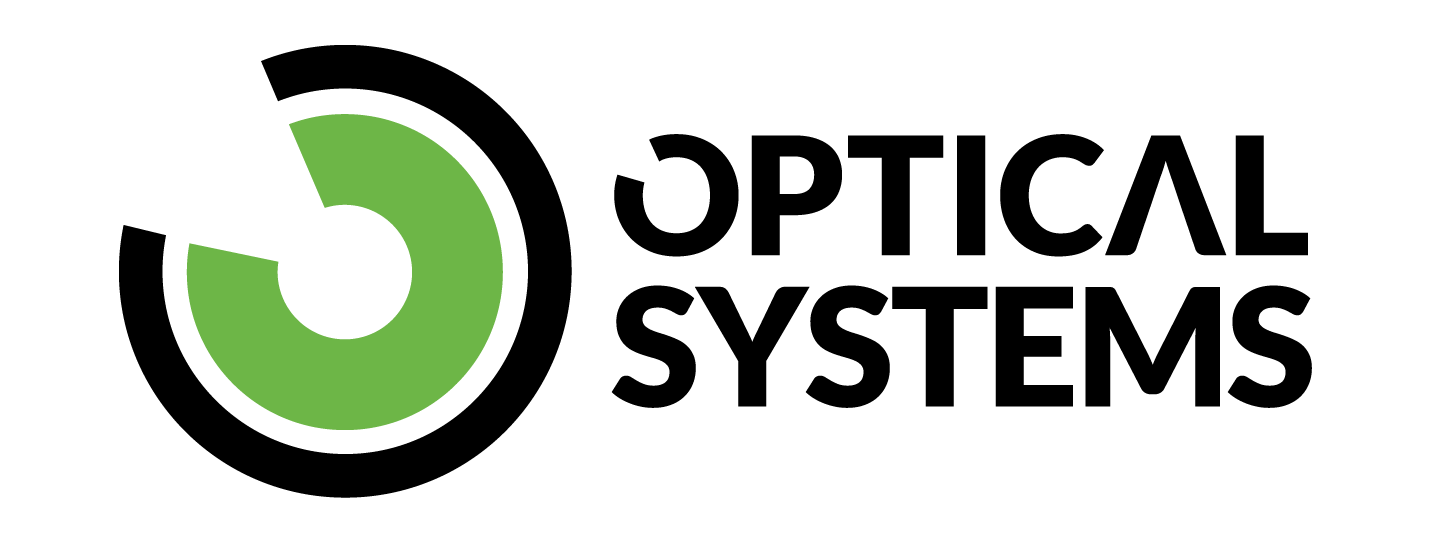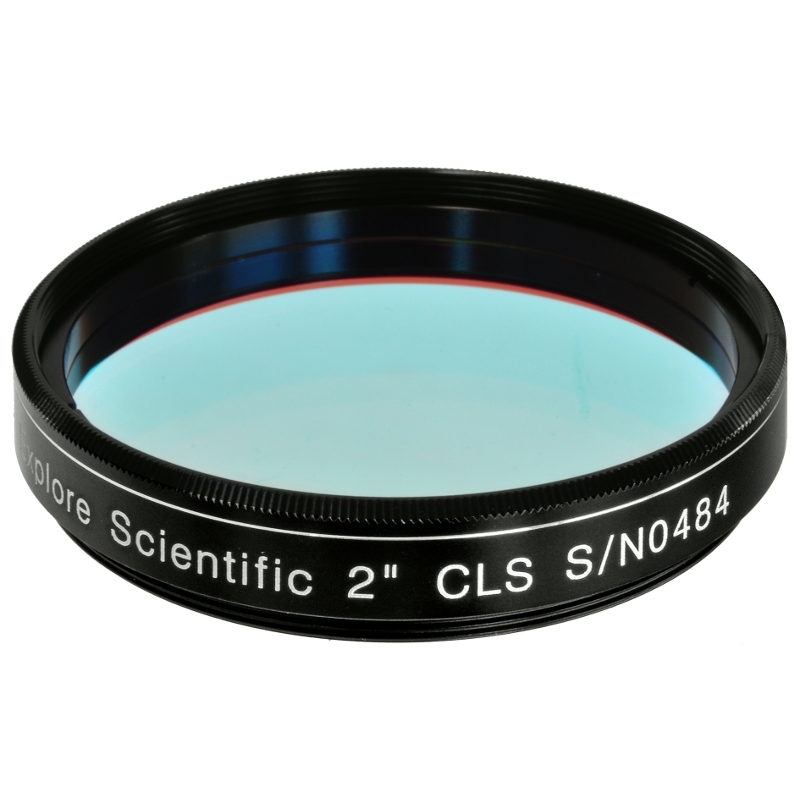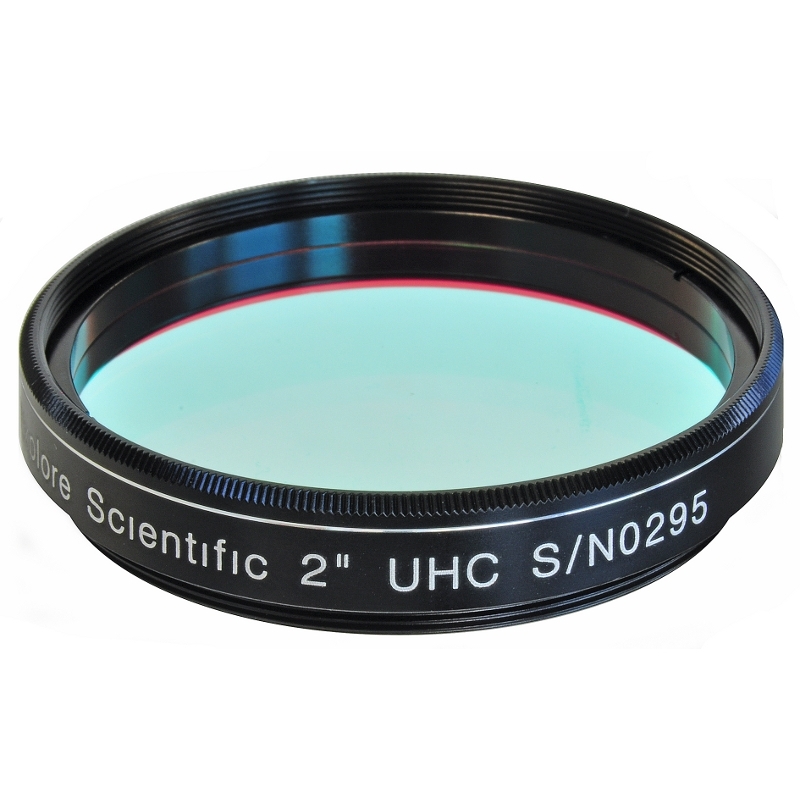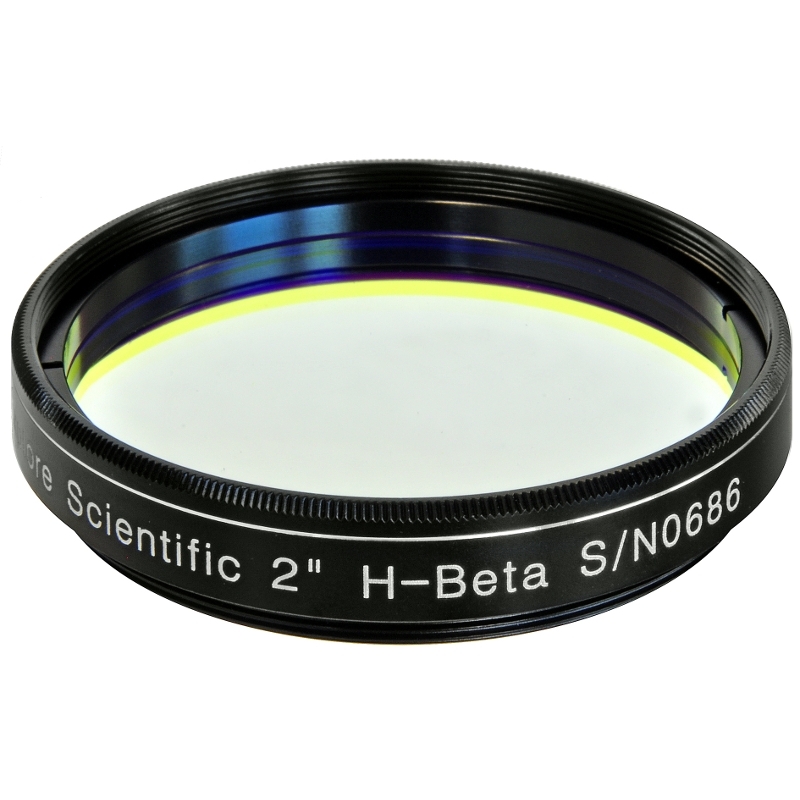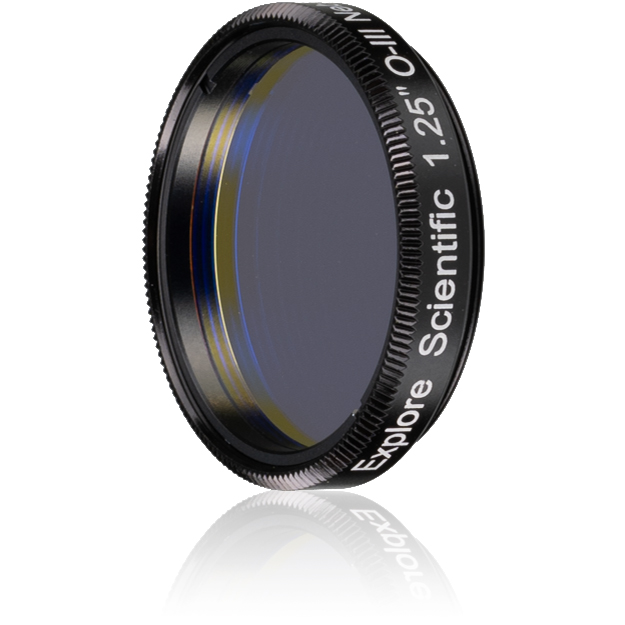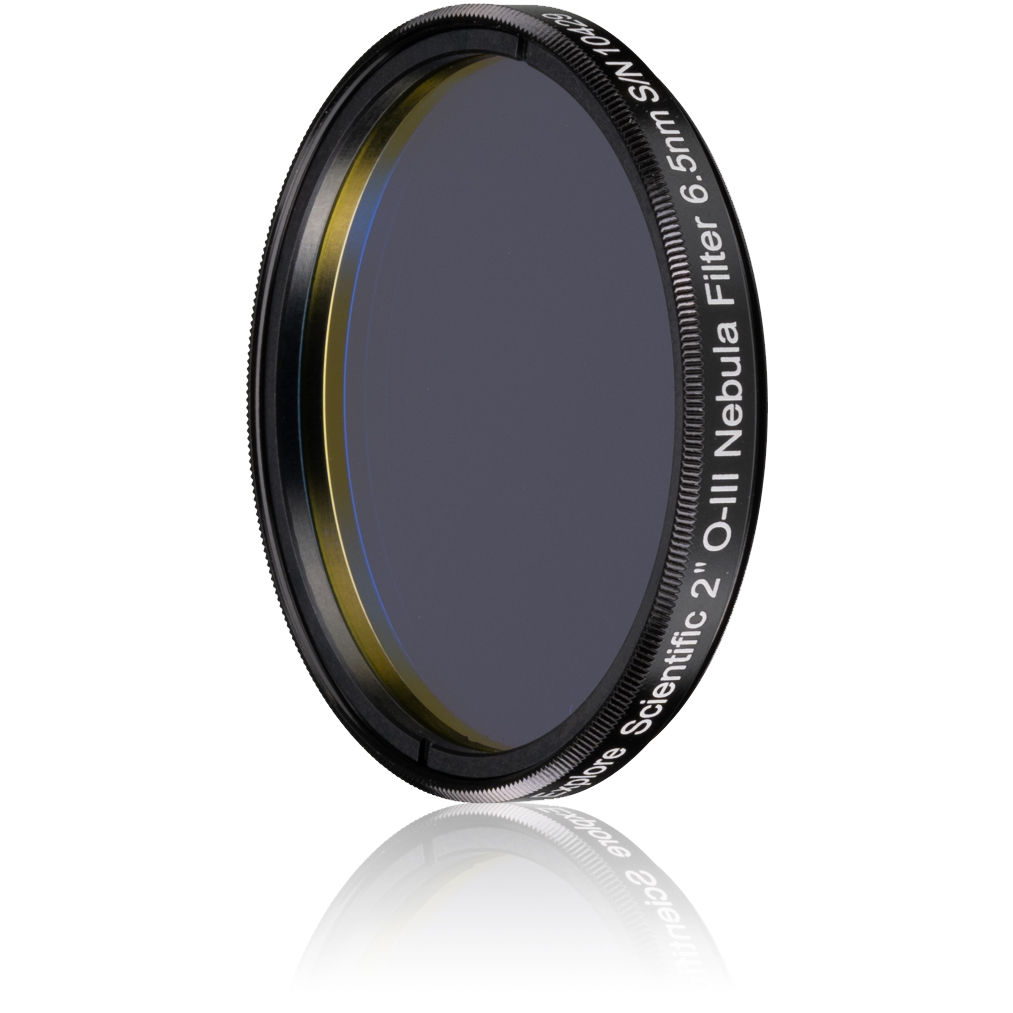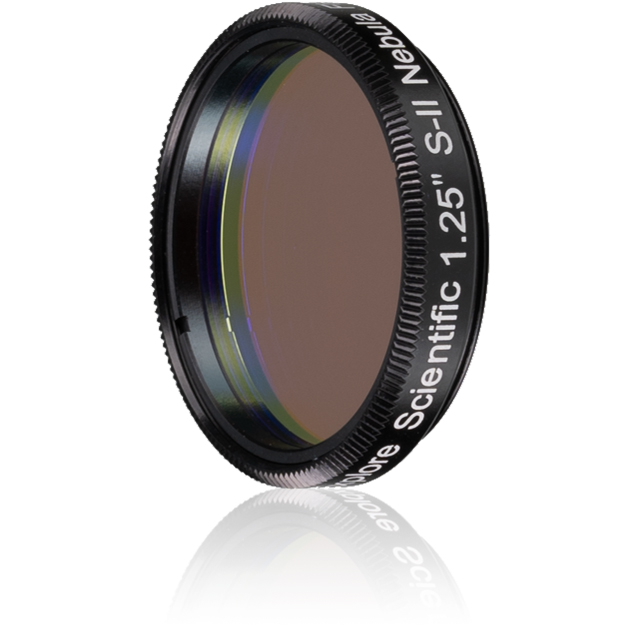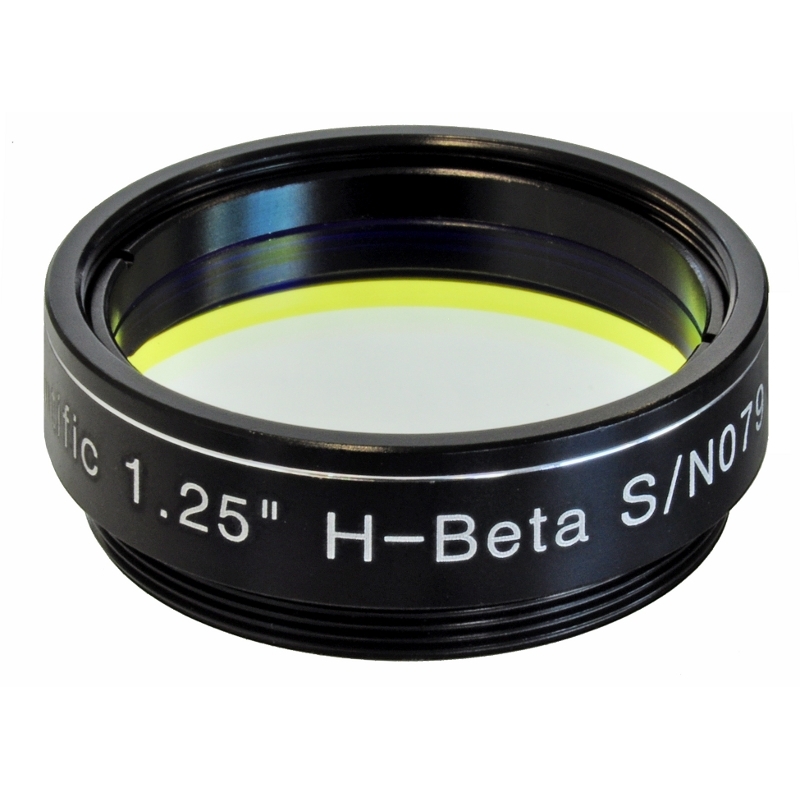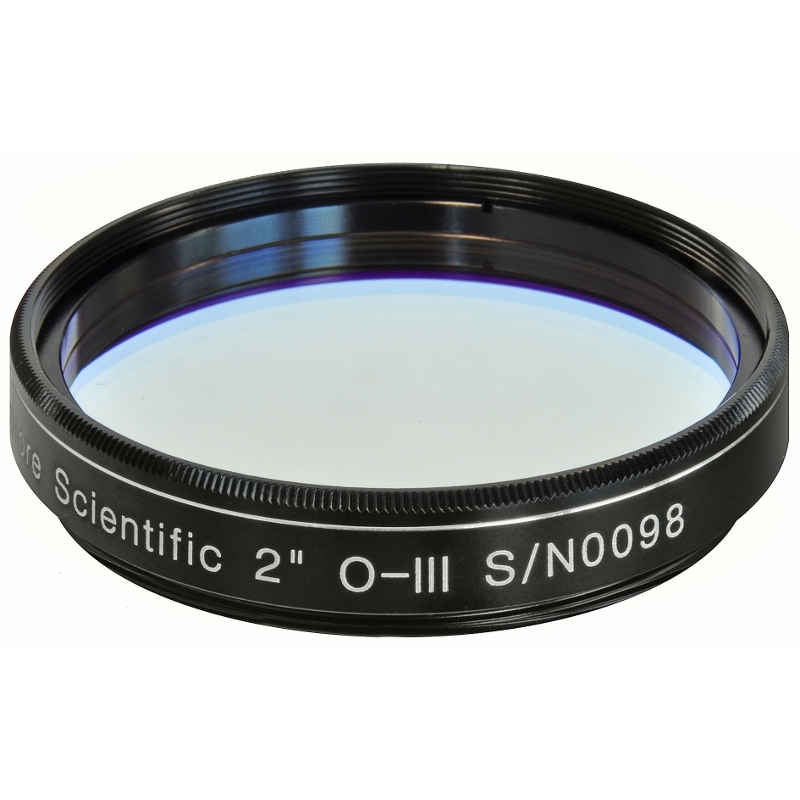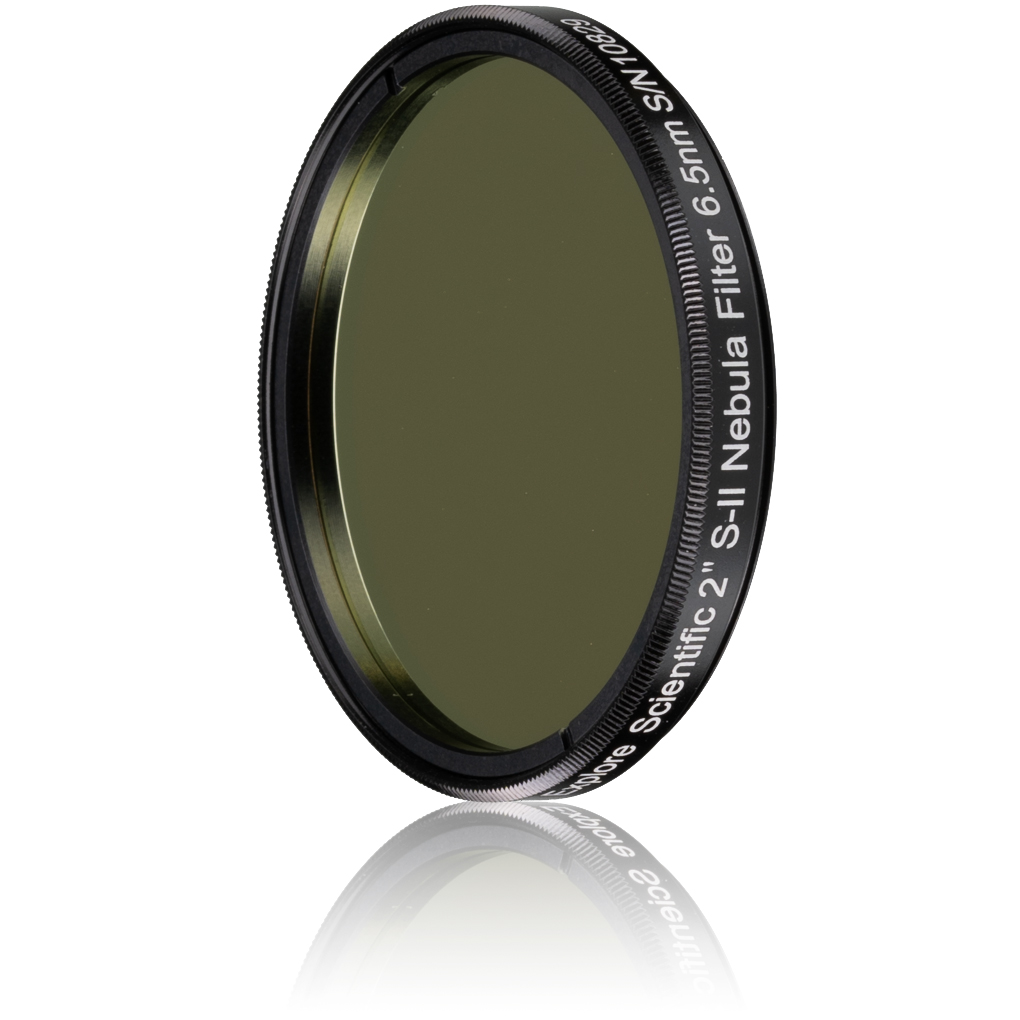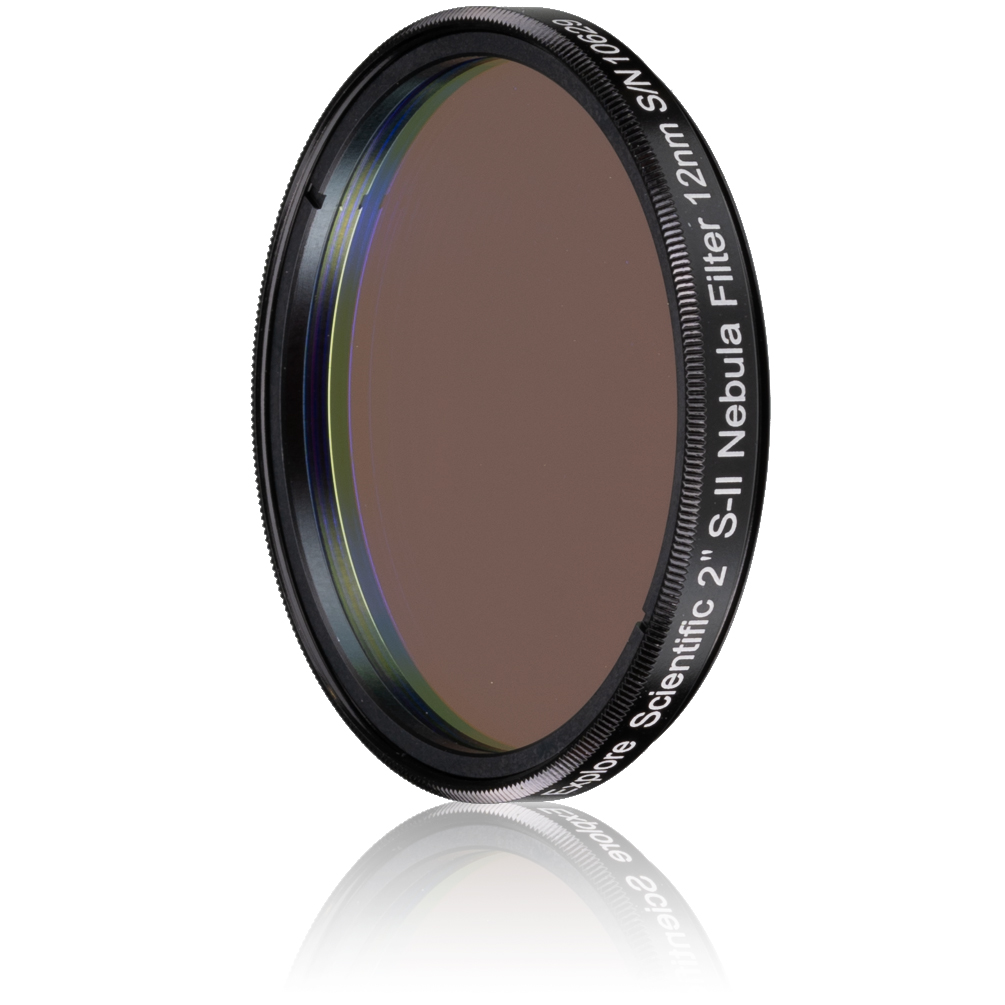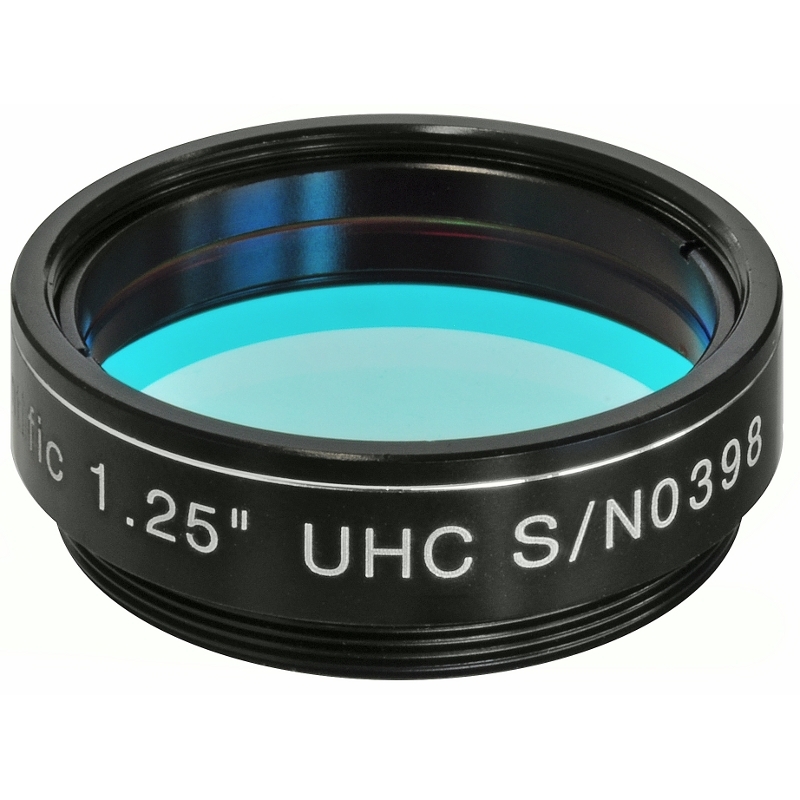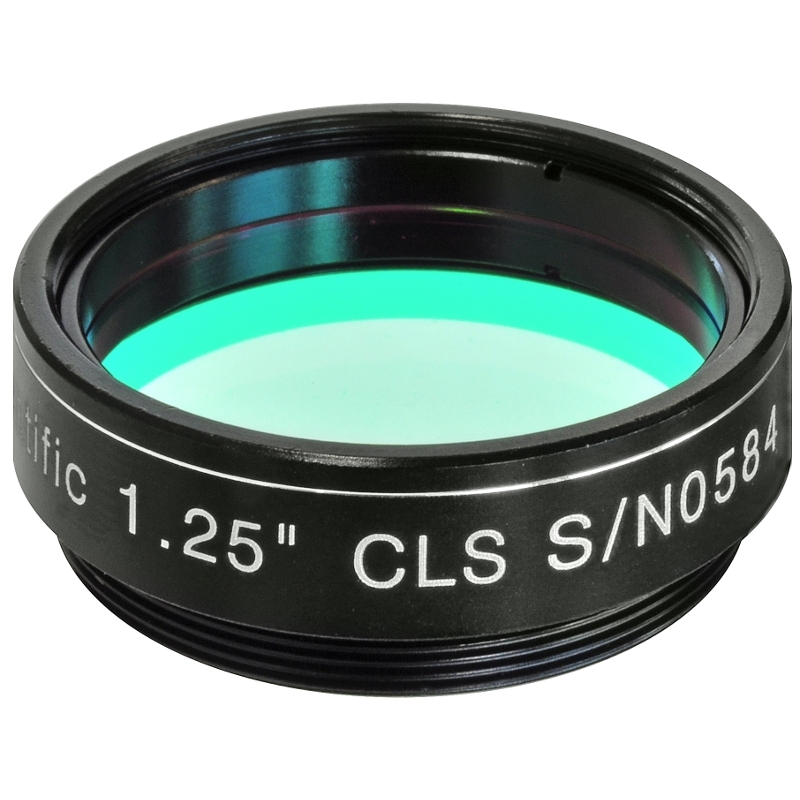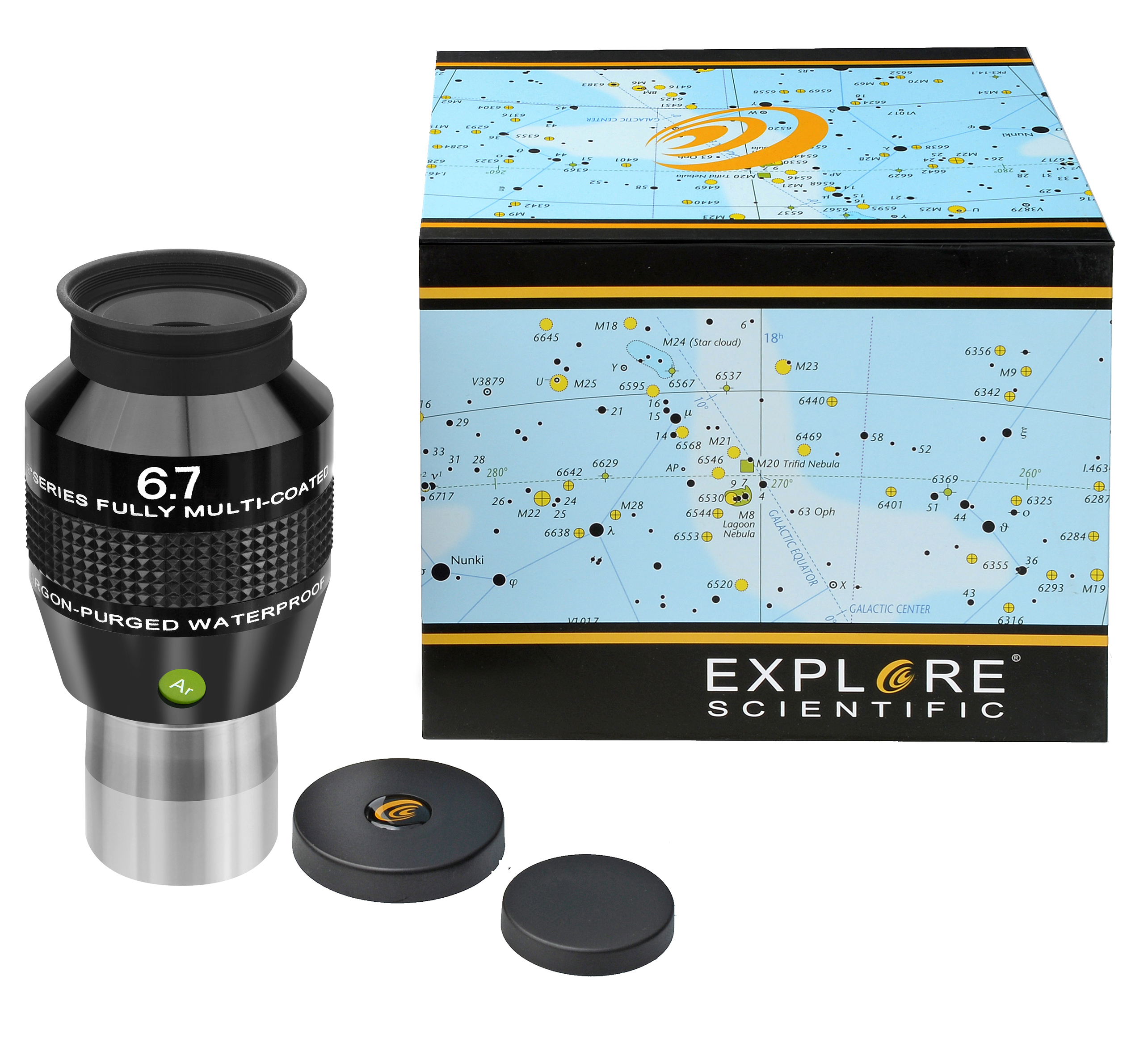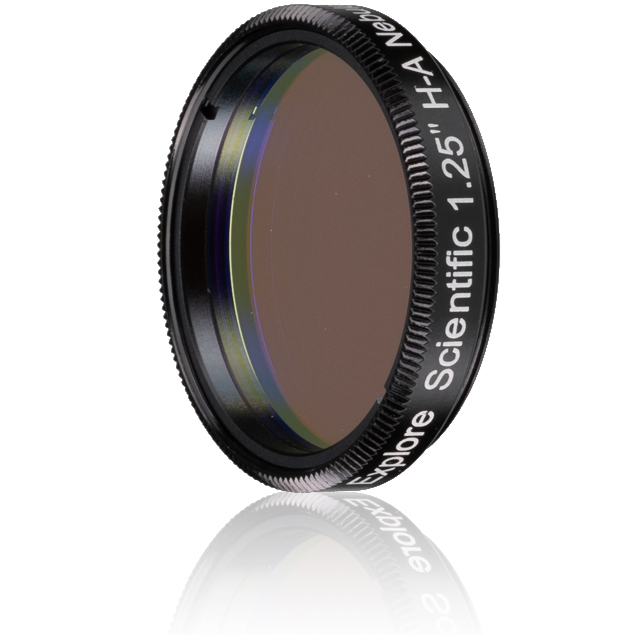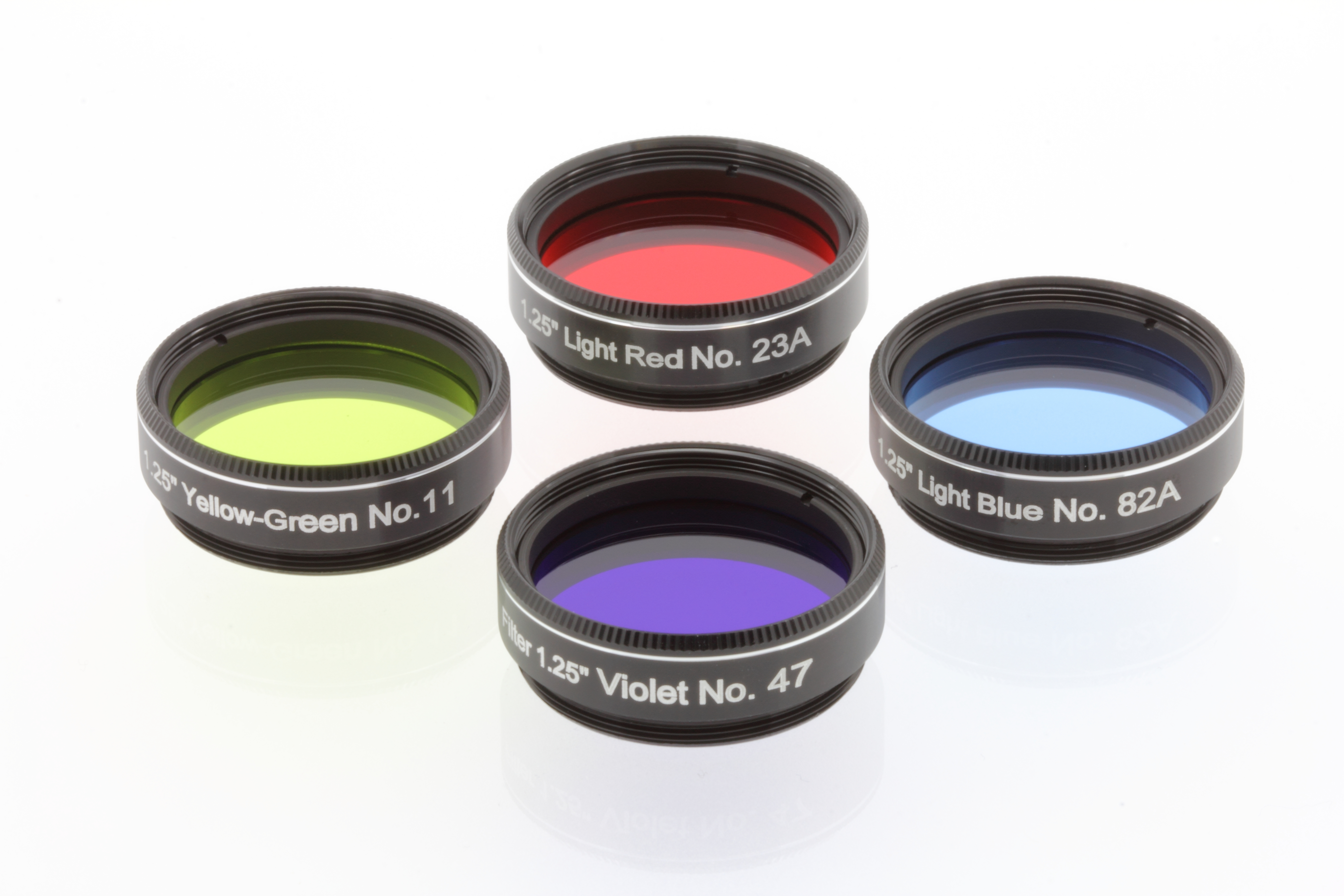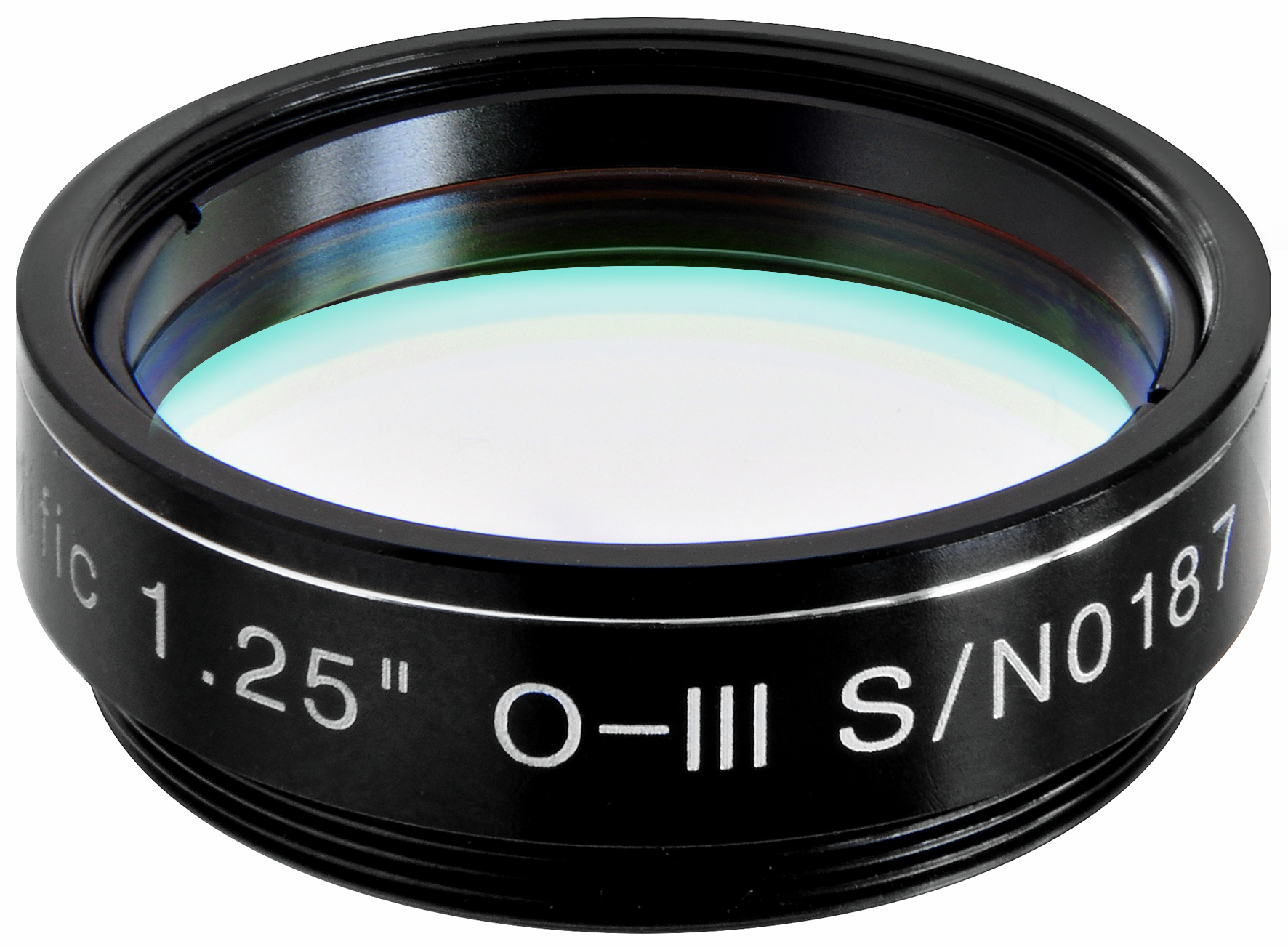
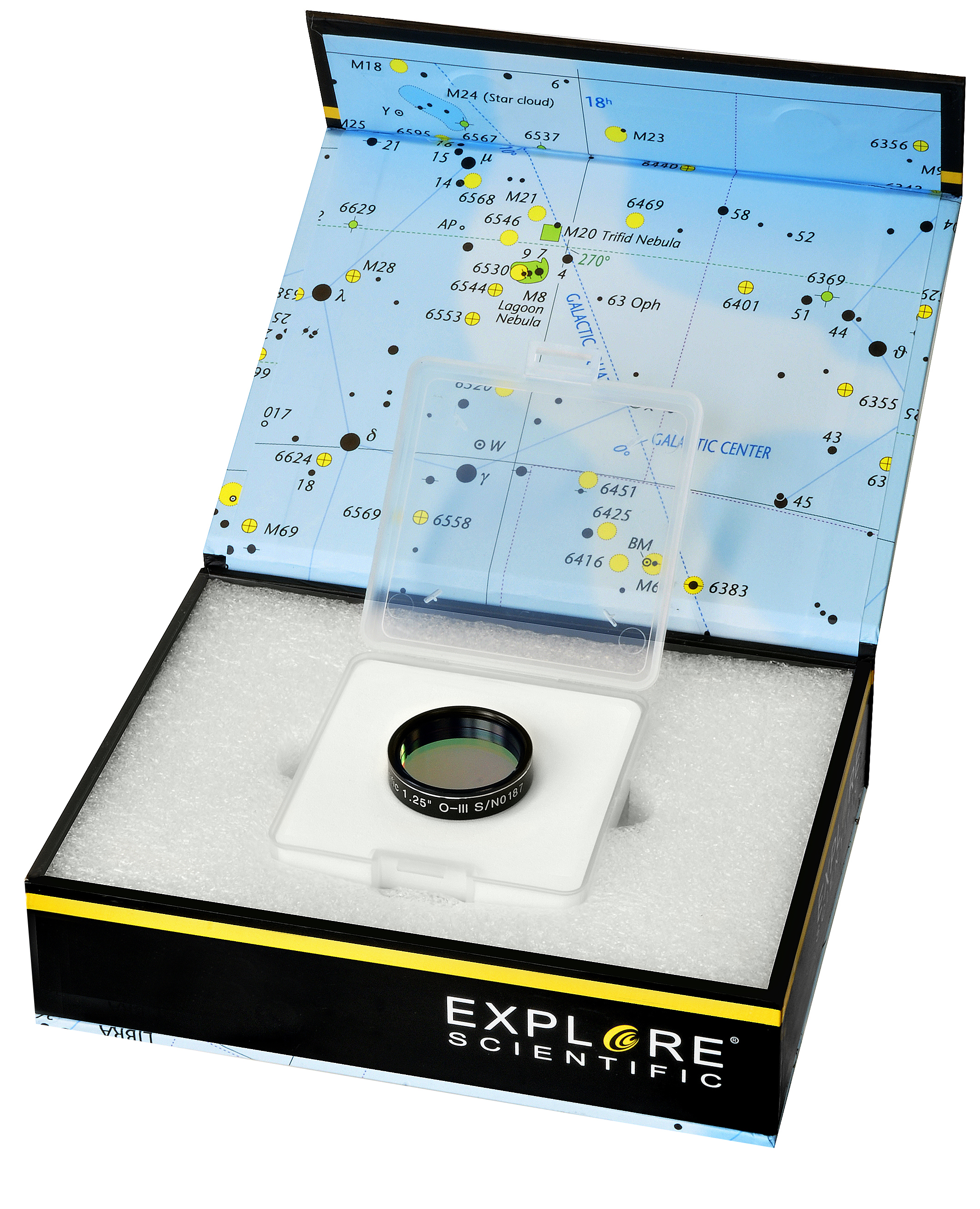
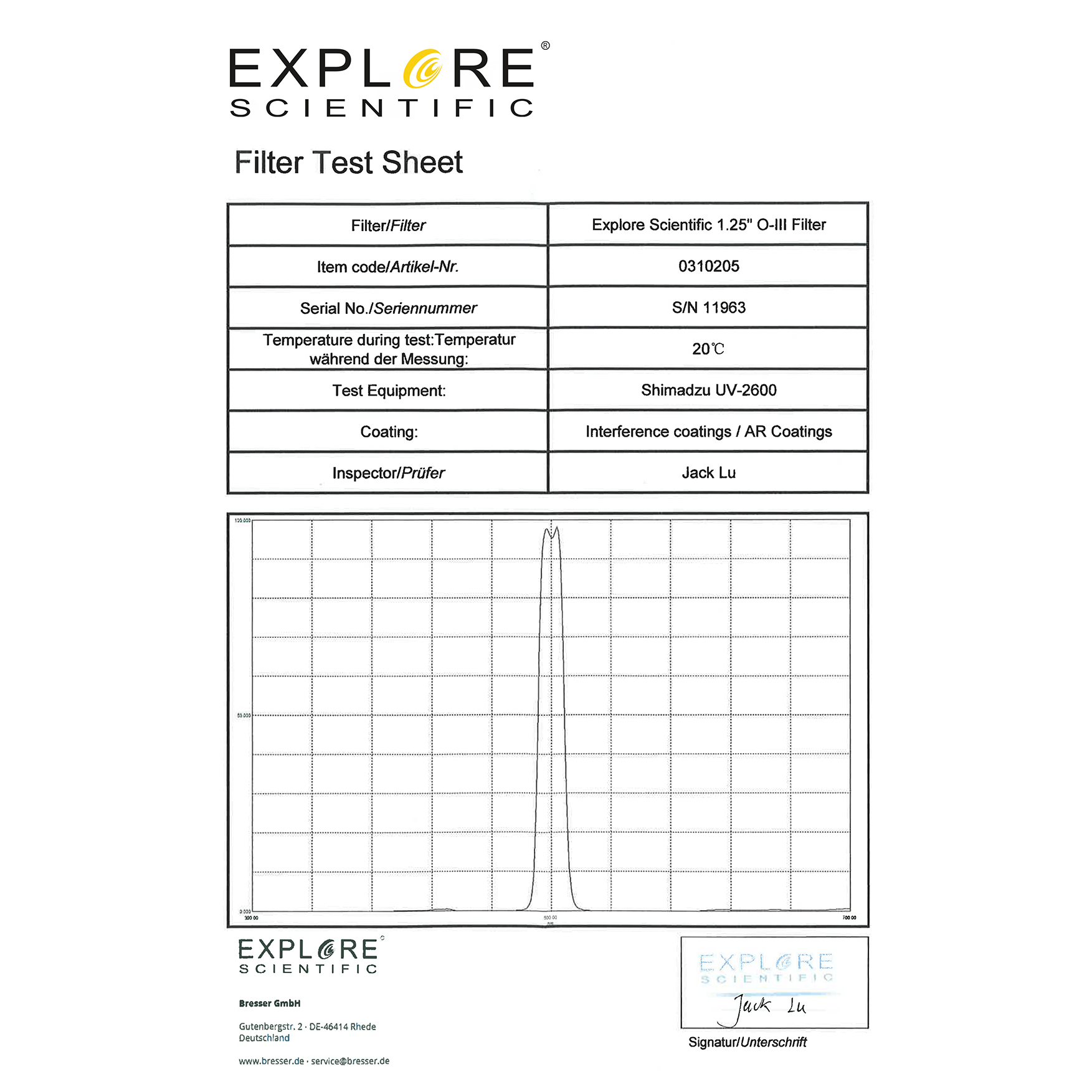









With the high-quality EXPLORE SCIENTIFIC O-III fog filter, observing low-light deep sky objects is much easier
- High-quality EXPLORE SCIENTIFIC O-III Fog Filter
- Only lets pass the emission lines of oxygen
- Absorbs all remaining colors and almost all artificial light
- Individual test report included
The EXPLORE SCIENTIFIC O-III filter uses a characteristic property of the so called emmission nebulae. Those objekcts glow in special colors, the so called emmission lines. Those emmission lines are linked to chemical elements - in this case oxygen. The EXPLORE SCIENTIFIC O-III nebula filter blocks all other colors (and thereby nearly all of the artificial light) and only the two emmission lines of the oxygen can pass the filter. The result is astonoishing: suddenly nebulae are visible at locations that were completely empty without filters. In suburbian skies for example the veil nebula NGC 6992 is almost not visible with a 200mm telescope. By using this filter you can see the nebula and its structures without problems. A must for every visual observer. The EXPLORE SCIENTIFIC nebula filters come with a individual test certificate - your guarantee to receive a premium filter.
FEATURES
- enables the observation of so called emmission nebulae
- blocks almost the entire artificial light
- only the two emmission lines of the oxygen passes the filter
- 1x 1,25" O-III nebula filter
| Colour: | black |
|---|---|
| Field of application [Telescope-filter]: | Filter for Deep-Sky Observing and Astrophotography |
| Material: | Glass, Plastic |
| Telescope filter type: | Nebula Filter |
Similar products
Customers also bought
Customers also viewed
